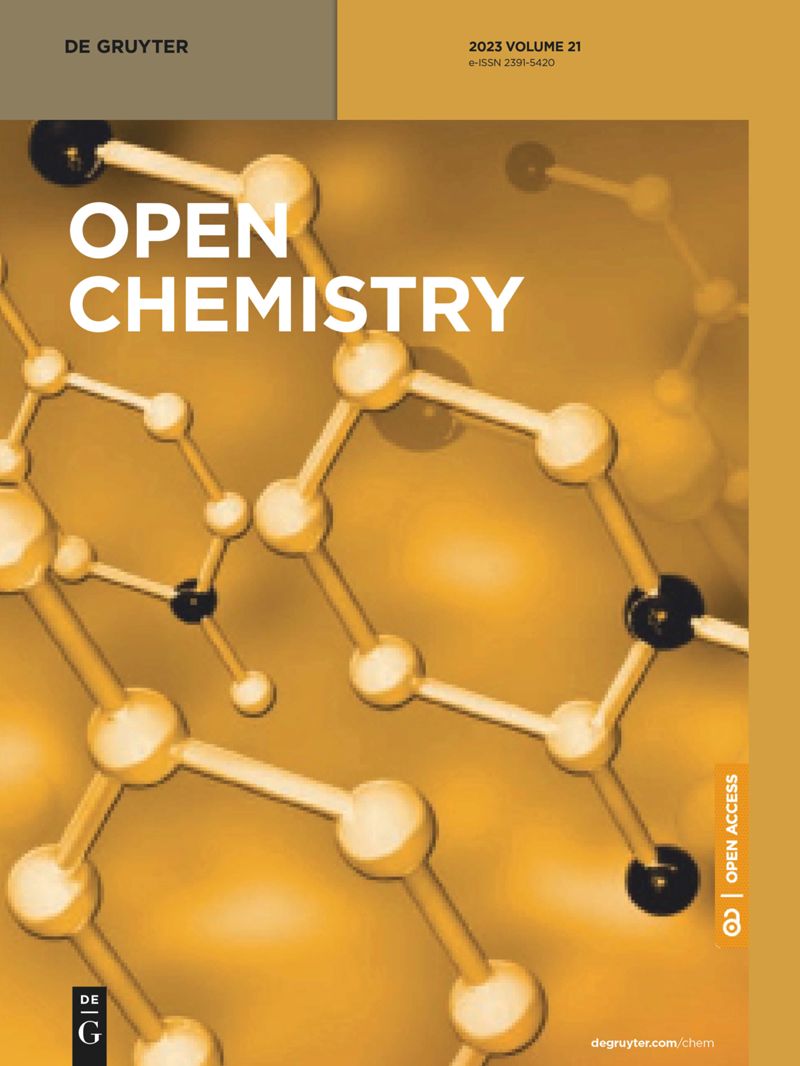The effect of gamma radiation on 5-hydroxymethylfurfural conversion in water and dimethyl sulfoxide
IF 2.1
4区 化学
Q3 CHEMISTRY, MULTIDISCIPLINARY
引用次数: 0
Abstract
5-Hydroxymethylfurfural (HMF) is a biomass-based chemical platform that can undergo many feasible reactions. One of the most important reactions is the oxidation to 2,5-furandicarboxylic acid (FDCA), which is the monomer for bioplastic production. In this work, the radiation method was used to investigate the conversion of HMF in both aqueous (DI) and dimethyl sulfoxide (DMSO) solutions. The effects of media solvents, atmospheric gases, HMF concentrations, additive bases, and absorbed doses of gamma radiation were studied. The results showed that the media solvent played a crucial role in HMF conversion under gamma irradiation. At 30 kGy, the HMF conversions in DI and DMSO were 92.1 and 24.1%, respectively, and the oxidation products were only found in the irradiated samples under DMSO. The HMF conversion and oxidation product formation increased with the gamma radiation dose. Moreover, it was found that FDCA stability toward gamma irradiation is highly sensitive in aqueous solution but relatively stable in DMSO. The results implied the alternative promising choice of radiation method compared with traditional methods. To join the bridge, the use of a mixture solvent DI/DMSO seems considerable in the future.伽马辐射对 5-羟甲基糠醛在水和二甲亚砜中转化的影响
5- 羟甲基糠醛(HMF)是一种基于生物质的化学平台,可以进行许多可行的反应。其中最重要的反应之一是氧化成 2,5-呋喃二甲酸(FDCA),后者是生物塑料生产的单体。本研究采用辐射法研究了 HMF 在水溶液(DI)和二甲基亚砜(DMSO)溶液中的转化。研究了介质溶剂、大气气体、HMF 浓度、添加剂碱和吸收的伽马辐射剂量的影响。结果表明,介质溶剂对伽马辐照下的 HMF 转化起着关键作用。在 30 kGy 下,DI 和 DMSO 中的 HMF 转化率分别为 92.1% 和 24.1%,只有在 DMSO 下的辐照样品中发现了氧化产物。随着伽马辐射剂量的增加,HMF 的转化率和氧化产物的生成量也随之增加。此外,研究还发现 FDCA 对伽马辐照的稳定性在水溶液中高度敏感,但在二甲基亚砜中相对稳定。这些结果表明,与传统方法相比,伽马射线辐照法是一种很有前途的选择。为了连接这座桥梁,使用去离子水/二甲基亚砜混合溶剂似乎在未来大有可为。
本文章由计算机程序翻译,如有差异,请以英文原文为准。
求助全文
约1分钟内获得全文
求助全文
来源期刊

Open Chemistry
CHEMISTRY, MULTIDISCIPLINARY-
CiteScore
3.80
自引率
4.30%
发文量
90
审稿时长
6 weeks
期刊介绍:
Open Chemistry is a peer-reviewed, open access journal that publishes original research, reviews and short communications in the fields of chemistry in an ongoing way. The central goal is to provide a hub for researchers working across all subjects to present their discoveries, and to be a forum for the discussion of the important issues in the field. The journal is the premier source for cutting edge research in fundamental chemistry and it provides high quality peer review services for its authors across the world. Moreover, it allows for libraries everywhere to avoid subscribing to multiple local publications, and to receive instead all the necessary chemistry research from a single source available to the entire scientific community.
 求助内容:
求助内容: 应助结果提醒方式:
应助结果提醒方式:


